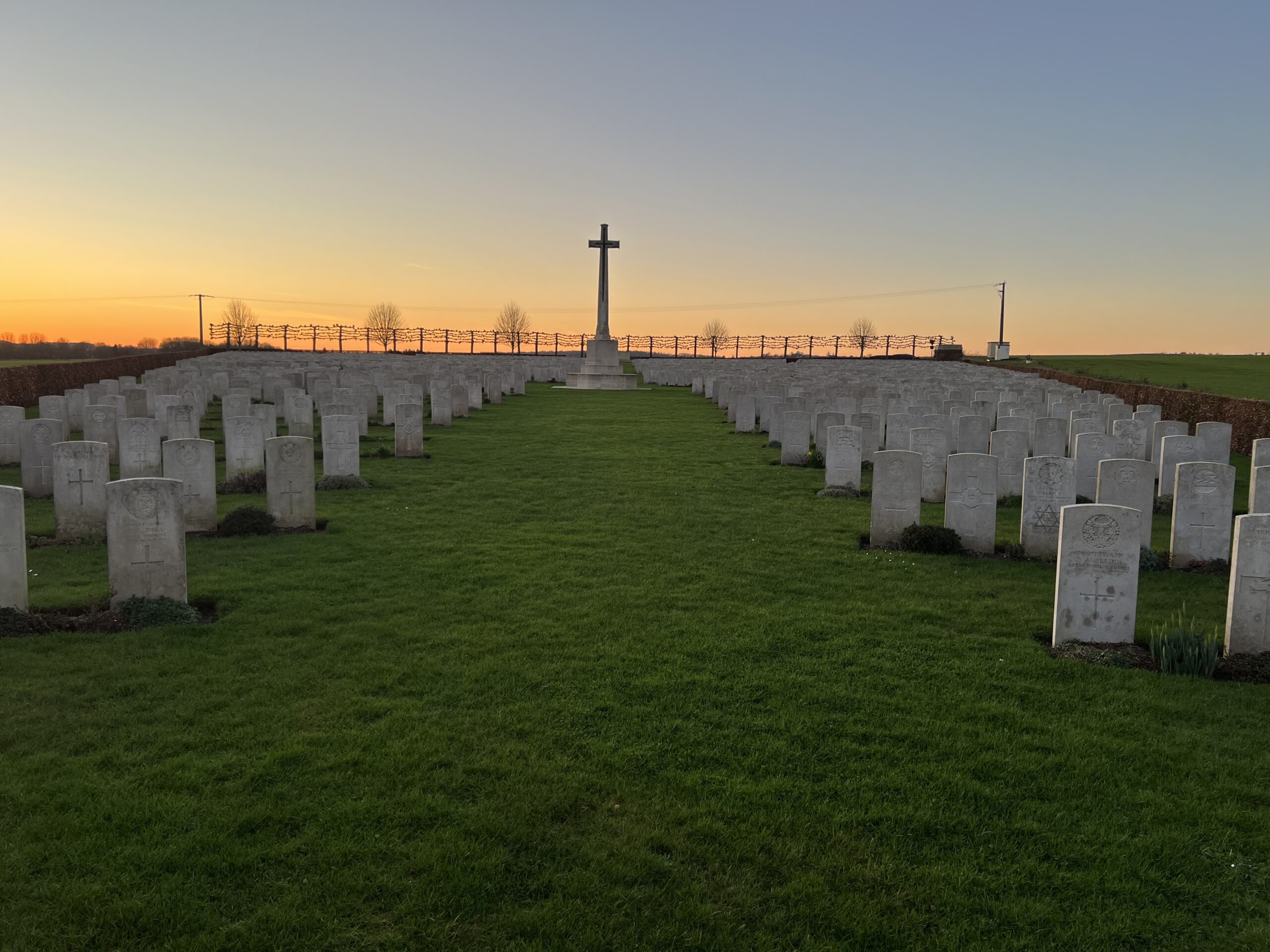It seems ages since I was last on the battlefield and 2024 is going to be a busy year. I have arrived back in Ypres exploring locally as well as trips to the Somme and Brussels. I am back here late in March for another two weeks and planning some interesting battlefield discoveries including an exciting three-day guided tour of Waterloo.
I will also be attending the 80th anniversaries for D-Day/Normandy and Arnhem later in the year.
If I am lucky enough to be the custodian of a soldier’s medal who fell in action, I always like to re-unite their medal with their last resting place. To pay tribute to their sacrifice and document their courage. I spent a day this week, visiting some of these brave men.
Private Thomas Ashmore DCM.
Thomas Ashmore was born in 1896 in Birmingham, England. He initially joined the Dragoons of the Line, before transferring to the 6th Battalion of the Dorsetshire Regiment. He was a stretcher bearer and on the 4th March 1918 he was posthumously awarded the Distinguished Conduct Medal (DCM) for conspicuous gallantry and devotion to duty.

On the 9th/10th July 1916 he attended to men of a different regiment on his own initiative while under heavy fire and on the 8th August 1916 he attended two injured men in No Mans Land under enemy fire and a machine gun which he was totally exposed to. Then on the 31st October 1916 with assistance of another stretcher bearer took back a wounded man from the trenches to the aid post. It was imperative that the wounded man be removed to the Aid Post at once. Yet due to the trenches being flooded and impassable the only way was to climb out of the trenches and cross in the open, in broad daylight. He climbed out of the trenches in full view of the Germans exposing himself to heavy fire and snipers but got his man back to the safety of the Aid Post.

In October 1917 during the Battle of Passchendaele on the night of the 14th/15th after heavy bombardment by mustard gas shells, from which his company suffered severely, he carried out his duty as a stretcher bearer. Although almost blind and vomiting severely he continued until quite exhausted and unable to see. He was transferred to the Casualty Clearing Stations at Dozinghem and on the 25th October 1917 he died from the effects of the gas.

Private H Norman
Duhallow ADS Cemetery was the location of an Advanced Dressing Station just north of Ypres. It was then the location of the 11th, 36th, and 44th Casualty Clearing Stations in October and November 1918.

Born in Warfield in Buckinghamshire. He travelled to France with the 1st Battalion Dorsetshire Regiment, later transferring to the Prince of Wales Leinster Regiment after recuperating from an injury. He would have taken part in the Battle for Mons and Le Cateau. He was severely wounded in October 1918. Medical reports confirm that on the 14th October, he was operated on due to a gun shot wounds to his thighs, right hand, and abdomen. They carried out an amputation at the upper third of his thigh and he went into shock with profuse hemorrhaging. He died the same day.

LCpl W Smith
Cite Bonjean Military Cemetery, Armentieres, France. It is located near the town hospital and used by the British when Armentieres was occupied on the 17th October 1914 and held until 10th April 1918. It was then occupied by the Germans until the 3rd October 1918.

William Smith was born in 1892 in Dundee, Scotland and joined the 6th Battalion, Dorsetshire Regiment. He died on the 6th May 1916. Killed in action while the 6th Dorset’s were fighting in trenches just outside Armentieres.

Due to the Germans occupying the town between April and October 1918, there is a large number of German graves within the cemetery. The cemetery is also home to a New Zealand memorial to 47 NZ officers and men who died in the local area with no known grave. One interesting grave was for E Kawhia of the NZ Māori Battalion, whose brother Potene Tuhoro died of tubercular peritonitis at the New Zealand Hospital in Brockenhurst, which is only 7 miles from where I live.


Private William Charles Pike
Duisans British Cemetery was selected for the 8th Casualty Clearing Station about 6 miles west of Arras in France.

William was born in 1898 in Motcombe, near Shaftesbury, Dorset. He joined the 6th Battalion Dorsetshire Regiment on the 2nd June 1916 at the age of eighteen.

On the 20th April 1917 William was located at Railway Triangle Fampoux-Monchy. They had just relieved the 10th Sherwood Foresters in the support line (Orange Hill) and during the evening of the 20th, the Germans shelled near the Battalion HQ with heavy 8-inch shells. One shell fell in the midst of carrying parties of B & C companies, killing one and wounding fifteen men. William was one of the injured. He died later that evening due to his wounds which were shrapnel to both legs, shoulder and back. He was aged nineteen.



Thank you Callum for remembering these brave men. We have been given much. Susan
Many thanks for you comments and support Susan. I hope all is well with you
It is such a pleasure for me to visit these sites and pay my respects. Thank you for your comments.